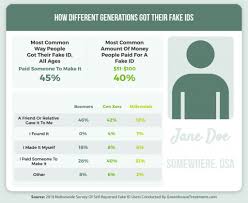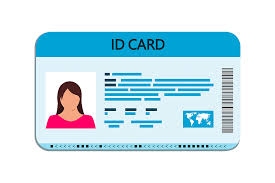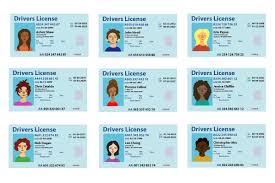ID verification loopholes
Exposing the Vulnerabilities: Addressing ID Verification Loopholes for a Safer Digital Future
Introduction
As businesses and consumers rapidly embrace digital transformation, one of the primary challenges faced across industries is ensuring the authenticity of users’ identities. ID verification systems are at the forefront of these efforts, playing a critical role in preventing fraud and securing sensitive information. However, no system is perfect. Many ID verification methods still have exploitable loopholes that can lead to disastrous breaches, affecting both businesses and their customers.
ID verification loopholes occur when there are weaknesses in the verification processes that allow malicious actors to bypass identity authentication measures. Such vulnerabilities can be exploited to commit fraud, impersonate others, or steal sensitive data. The consequences of such breaches can be far-reaching, ranging from financial losses to damage to brand reputation, not to mention legal consequences due to non-compliance with regulatory requirements like GDPR or KYC guidelines.
This article will provide a comprehensive examination of ID verification loopholes, exploring what they are, how they emerge, and the potential impact they can have. Additionally, it will offer a detailed market analysis of the ID verification industry, identifying key players and technological advancements, and will analyze how businesses can fortify their systems to minimize the risks associated with identity fraud.
1. Understanding ID Verification Loopholes
1.1 What Are ID Verification Loopholes?
ID verification loopholes refer to weaknesses or gaps within a system that allow fraudulent individuals to bypass security measures and falsely verify their identities. These loopholes can arise due to inadequate technology, human error, or even vulnerabilities in regulations. When ID verification processes are not sufficiently robust, they can be exploited by identity thieves, hackers, and fraudsters for nefarious purposes.
Some common types of ID verification loopholes include:
- Insufficient document checks: Fraudsters may use fake or altered documents that go undetected.
- Lack of biometric verification: Without biometric measures, verifying a person’s identity becomes reliant on documents that can be forged.
- Inconsistent data input: Mismatches in names, addresses, or other personal details may not trigger red flags in poorly designed systems.
- Synthetic identity fraud: Fraudsters create new identities by combining real and fabricated information.
These loopholes are dangerous because they provide attackers with an entry point to carry out a range of fraudulent activities. Understanding where these vulnerabilities lie is the first step toward building a more secure ID verification framework.
1.2 How ID Verification Loopholes Emerge
Several factors contribute to the emergence of ID verification loopholes. These include:
- Outdated technology: Legacy systems that rely solely on basic document verification often lack the sophistication needed to combat modern identity fraud techniques.
- Human error: Mistakes made by employees during manual ID checks can lead to undetected fraud.
- Regulatory gaps: Loopholes may also be embedded within compliance frameworks, which may not require all businesses to adopt the most stringent verification measures.
- Fraudulent documents: The increasing sophistication of forgery techniques means that fake documents can easily slip through systems that are not equipped to detect them.
- Inadequate cross-referencing: Without strong data validation mechanisms, such as cross-referencing government databases, it is easy for fraudulent data to be accepted.
2. The Market for ID Verification Solutions
2.1 Global Market Overview
The ID verification market is growing rapidly due to the increasing need for secure digital identity solutions. According to industry reports, the global identity verification market was valued at approximately USD 8 billion in 2022 and is projected to grow at a compound annual growth rate (CAGR) of 15% through 2028.
This growth is driven by several factors:
- Increasing regulatory requirements: Compliance with KYC (Know Your Customer) and anti-money laundering (AML) regulations is mandatory for industries such as banking, insurance, and fintech.
- Rising incidents of identity fraud: Identity fraud continues to be a growing threat across the globe, particularly as more people and businesses operate online.
- Expansion of digital services: E-commerce, online banking, and telemedicine have increased the demand for secure ID verification processes.
- Technological advancements: The integration of artificial intelligence (AI) and machine learning (ML) into ID verification systems has enhanced the ability to detect fraudulent activity.
2.2 Key Players in the Industry
Some of the leading companies in the ID verification space include:
- Jumio: A pioneer in AI-powered ID verification, Jumio offers services that scan documents and biometric data to ensure secure and accurate verification.
- Onfido: Known for its powerful machine learning algorithms, Onfido specializes in real-time document verification and facial recognition technology.
- Trulioo: Focused on global identity verification, Trulioo provides access to a broad range of identity networks worldwide.
- ID.me: A platform that enables secure digital identity verification, particularly for government agencies and healthcare providers.
- Veriff: Offering comprehensive identity verification services, Veriff provides real-time checks that are trusted by businesses globally.
These companies have invested heavily in the latest technology to stay ahead of fraudsters. They incorporate biometric data, AI-driven analysis, and blockchain technology to strengthen verification measures and eliminate vulnerabilities.
2.3 Trends and Innovations
- Biometric authentication: The use of fingerprints, facial recognition, and even voice identification has become more common in ID verification processes, offering a much more secure alternative to traditional document-based methods.
- AI and machine learning: AI-driven systems are being used to identify fraudulent patterns, analyze behavioral data, and predict potential threats before they become harmful.
- Blockchain technology: Blockchain has the potential to revolutionize ID verification by offering a decentralized system for storing and verifying identities, making it more difficult for fraudsters to manipulate.
- Multi-factor authentication: Combining various forms of verification (such as biometrics, passwords, and one-time PINs) creates an additional layer of security.
3. Target Audience for ID Verification Solutions
3.1 Financial Institutions and Fintech Companies
Financial institutions are among the largest users of ID verification services. In order to comply with stringent KYC regulations and prevent fraud, banks and fintech companies must implement strong identity verification measures. For example, during the onboarding process, customers are often required to provide proof of identity through government-issued IDs, which must be verified against external databases.
Due to the sensitive nature of the information they handle, financial institutions are prime targets for fraud. Therefore, they are particularly interested in solutions that can protect their customers’ identities while ensuring compliance with relevant regulations.
3.2 E-commerce and Online Retailers
As e-commerce continues to grow, so too does the need for robust ID verification processes. Online retailers often face challenges when verifying the identity of new customers, particularly when it comes to high-value purchases. Fraudulent activities, such as identity theft and account takeover, can have serious financial and reputational repercussions for businesses.
ID verification solutions can help e-commerce companies reduce the risk of fraud by ensuring that customers are who they claim to be before transactions are processed.
3.3 Healthcare Providers
Healthcare organizations are increasingly adopting digital platforms to streamline patient management and medical record systems. However, as these organizations store and process sensitive health information, they must also implement secure ID verification systems to prevent unauthorized access to patient data. Identity verification helps protect patient privacy while ensuring compliance with health data regulations like HIPAA in the United States.
3.4 Government Agencies
Government agencies that offer services such as unemployment benefits, social security, and voting systems must have robust ID verification systems in place. Fraudsters often target government programs by using stolen identities to claim benefits or access services they are not entitled to. By implementing strong ID verification processes, government agencies can reduce fraud and ensure that only eligible individuals are able to access these services.
4. Common Challenges with ID Verification Solutions
Despite the technological advancements in ID verification systems, there are several challenges that businesses still face in implementing these solutions.
4.1 False Positives and Negatives
One of the most common issues is the occurrence of false positives (when a legitimate individual is flagged as a threat) and false negatives (when a fraudster is mistakenly verified). Both scenarios can have serious consequences: false positives can lead to customer dissatisfaction, while false negatives can result in significant financial loss.
4.2 User Experience vs. Security
Striking the right balance between security and user experience is a challenge for many businesses. While stringent ID verification measures can reduce fraud, they can also create friction for legitimate users, leading to drop-offs in customer acquisition or retention. Businesses must find ways to maintain security without compromising the user experience.
4.3 Compliance with Global Regulations
For businesses that operate in multiple countries, complying with varying ID verification and data privacy regulations can be a major challenge. What might be legally acceptable in one jurisdiction may not be in another, leading to complications in the onboarding process and service provision.
4.4 Technology Integration
Integrating new ID verification technologies with existing legacy systems can be difficult, particularly for large organizations. There may be compatibility issues, data migration challenges, and significant costs involved in overhauling existing processes.
5. Addressing ID Verification Loopholes: Best Practices
In order to minimize the risks posed by ID verification loopholes, businesses should adopt the following best practices:
5.1 Multi-Layered Security Measures
Relying on a single method of verification is no longer sufficient. Businesses should implement multi-layered security systems that combine document verification, biometric checks, and behavioral analysis to reduce the chances of fraud slipping through the cracks.
5.2 Regular System Updates and Audits
Technology evolves quickly, and so do the tactics used by fraudsters. Regularly updating ID verification systems to include the latest security features and conducting frequent audits to identify and close any loopholes are essential steps for ensuring the ongoing security of customer data.
5.3 AI-Driven Fraud Detection
Using AI-powered fraud detection tools can help businesses stay ahead of increasingly sophisticated fraudsters. These systems can analyze large volumes of data in real-time, identifying suspicious patterns and automatically flagging potential threats before they cause damage.
5.4 Continuous Customer Monitoring
Verification should not stop after the initial onboarding process. Continuous monitoring of customer accounts, especially for high-risk activities, can help prevent fraud over time. Behavioral analysis tools can detect unusual patterns of behavior that may indicate fraudulent activity.
Conclusion
ID verification is a critical aspect of modern digital security, yet it is not without its flaws. The presence of ID verification loopholes poses significant risks to businesses, consumers, and governments alike. By understanding where these vulnerabilities lie and implementing comprehensive, multi-layered security measures, businesses can protect their users from fraud while maintaining compliance with regulatory requirements.
The future of ID verification lies in advanced technologies like biometric authentication, AI, and blockchain. These technologies, when properly implemented, can help close the loopholes that fraudsters seek to exploit and provide a safer, more secure online experience for everyone.
As the digital landscape continues to evolve, the importance of robust ID verification systems will only grow. For businesses to succeed in this environment, they must stay vigilant, proactive, and committed to protecting their customers' identities from the ever-growing threat of cyber fraud.
 fake identification industry
fake identification industry
 fake Florida driver’s license
fake Florida driver’s license
 security measures
security measures
 High-quality fake ID design
High-quality fake ID design